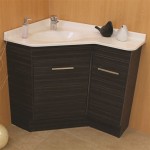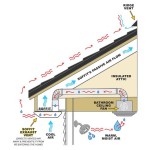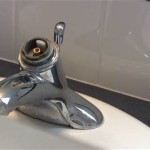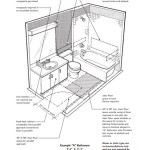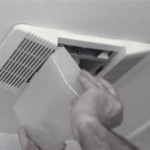Green Corrosion on Bathroom Fixtures: Causes, Prevention, and Removal
Green corrosion on bathroom fixtures is a common problem for many homeowners. This unsightly discoloration can make even the cleanest bathroom look dingy and neglected. Understanding the causes of this green corrosion, as well as effective prevention and removal strategies, can help maintain the aesthetic appeal and longevity of bathroom fixtures.
What Causes Green Corrosion?
The green staining typically seen on bathroom fixtures is primarily caused by the presence of copper in the water supply. When water containing copper comes into contact with oxygen and acidic elements, a chemical reaction occurs, resulting in the formation of copper salts. These salts, often appearing as green or blue-green deposits, are commonly referred to as copper patina. Several factors contribute to this process:
*
High Copper Levels in Water:
Some water sources naturally contain higher levels of copper. This can be exacerbated by the corrosion of copper pipes within the plumbing system. *Acidic Water:
Water with a low pH level (acidic) is more likely to leach copper from pipes and accelerate the corrosion process. *Hard Water:
While not directly causing green corrosion, hard water containing high mineral content can leave behind white deposits that make the green staining more noticeable. *Standing Water:
Water left standing on fixtures for extended periods provides ample time for the chemical reaction to occur and the green deposits to form.Identifying Green Corrosion
Green corrosion is relatively easy to identify. It typically appears as a light green to bluish-green stain on bathroom fixtures, particularly those made of or plated with copper or brass. These stains are most commonly found around the base of faucets, on showerheads, and in the drain area of sinks and tubs.
*
Color:
Look for a distinct green or blue-green hue. *Location:
Stains are often concentrated around areas where water drips or pools. *Texture:
The corrosion can feel slightly rough or grainy to the touch.Preventing Green Corrosion
Preventing green corrosion is often more effective and less labor-intensive than removing it once it has formed. Several preventative measures can significantly reduce the occurrence of this unsightly staining:
*
Water Softener Installation:
Installing a water softener can reduce the mineral content in hard water, making it less conducive to the formation of noticeable green stains. *Water Filtration:
A water filter can help remove excess copper and other impurities from the water supply, minimizing the potential for corrosion. *Regular Cleaning:
Wiping down fixtures after each use helps prevent the buildup of water and reduces the opportunity for corrosion to occur. *Proper Ventilation:
Ensuring adequate bathroom ventilation can help reduce moisture and prevent the formation of acidic condensation. *Address Leaks Promptly:
Leaky faucets contribute to standing water and should be repaired as soon as possible.Removing Green Corrosion
Several methods can be employed to remove green corrosion from bathroom fixtures. The chosen method will depend on the severity of the staining and the type of fixture material.
Natural Cleaning Solutions
For minor staining, natural cleaning solutions can be effective and environmentally friendly.
*
Vinegar and Salt Paste:
A paste made from equal parts white vinegar and salt can be applied to the affected area and left for a few minutes before scrubbing and rinsing. *Lemon Juice:
Similar to vinegar, the acidity of lemon juice can help dissolve copper deposits. Apply fresh lemon juice to the stain, let it sit, and then rinse. *Baking Soda Paste:
A paste of baking soda and water can be used as a gentle abrasive to scrub away green stains.Commercial Cleaning Products
Commercial cleaners specifically designed for bathroom fixtures can also be used to remove green corrosion. Always follow the manufacturer's instructions and ensure the product is compatible with the fixture material.
*
Copper Cleaners:
Specialized copper cleaners are formulated to effectively remove tarnish and corrosion. *Bathroom Cleaners:
Many general-purpose bathroom cleaners contain ingredients that can dissolve copper deposits.Preventing Recurrence
After removing green corrosion, implementing preventative measures is crucial to avoid recurrence. These include regular cleaning, addressing leaks promptly, and considering water filtration or softening solutions.
*
Regular Maintenance:
Consistent cleaning is the most effective way to prevent the buildup of green corrosion. *Addressing Underlying Issues:
Identifying and resolving any underlying plumbing problems, such as leaky pipes or high copper levels in the water supply, is essential for long-term prevention.
Blue Green Stains On Bathroom Fixtures A Ga Plumber Explains Mr Atlanta

What Causes Green Corrosion On Copper Pipe Fischer Plumbing

Green Corrosion Bathroom Water Line Doityourself Com Community Forums

5 Powerful Proven Tips To Prevent Faucet Corrosion Nir Plumbing

If You See Green Residue In Your Sink This Is What It Means The Family Handyman

What Causes Green Corrosion On Copper Pipe Fischer Plumbing

Hard Water Buildup Problems And Solutions Reddi Plumbing

Hard Water Buildup Problems And Solutions Reddi Plumbing

Condo Blues What Is This Green And White Corrosion On My Faucet How Do I Fix It

Water Stains Solutions R G Systems Inc Maryland
Related Posts


